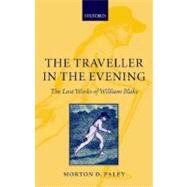The Traveller in the Evening The Last Works of William Blake
, by Paley, Morton D.- ISBN: 9780199227617 | 0199227616
- Cover: Paperback
- Copyright: 2/6/2008
There has never been a book about Blake's last period, from his meeting with John Linnell in 1818 to his death in 1827, although it includes some of his greatest works. In The Traveller in the Evening, Morton Paley argues that this late phase involves attitudes, themes, and ideas that are either distinctively new or different in emphasis from what preceded them. After an introduction on Blake and his milieu during this period, Paley begins with a chapter on Blake's illustrations to Thornton's edition of Virgil. Paley relates these to Blake's complex view of pastoral, before proceeding to a history of the project, its near-abortion, and its fulfillment as Blake's one of greatest accomplishments as an illustrator. In Yah and His Two Sons the presentation of the divine, except where it is associated with art, is ambiguous where it is not negative. Paley takes up this separate plate in the context of artists's representations of the Laocoon that would have been known to Blake, and also of what Blake would have known of its history from classical antiquity to his own time. Blake's Dante water colours and engravings are the most ambitious accomplishment of the last years of his life, and Paley shows that the problematic nature of some of these pictures, with Beatrice Addressing Dante from the Car as a main example, arises from Blake's own divided and sharply polarized attitude toward Dante's Comedy. The closing chapter, called 'Blake's Bible', is on the Bible-related designs and writings of Blake's last years. Paley discusses The Death of Abel (addressed to Lord Byron 'in the Wilderness') as a response to its literary forerunners, especially Gessner's Death of Abel and Byron's Cain. For the Job engravings Paley shows how the border designs and the marginal texts set up a dialogue with the main illustrations unlike anything in Blake's Job water colours on the same subjects. Also included here are Blake's last pictorial work on a Biblical subject, The Genesis manuscript, and Blake's last writing on a Biblical text, his vitriolic comments on Thornton's translations of the Lord's Prayer.







